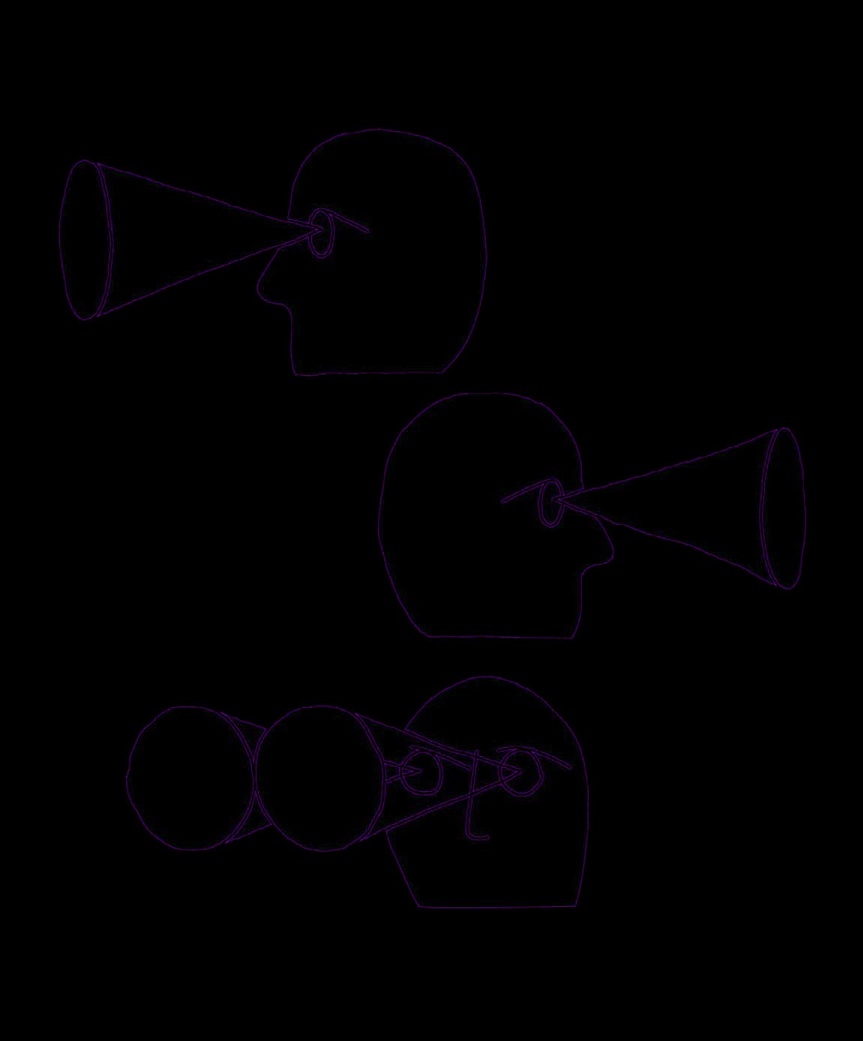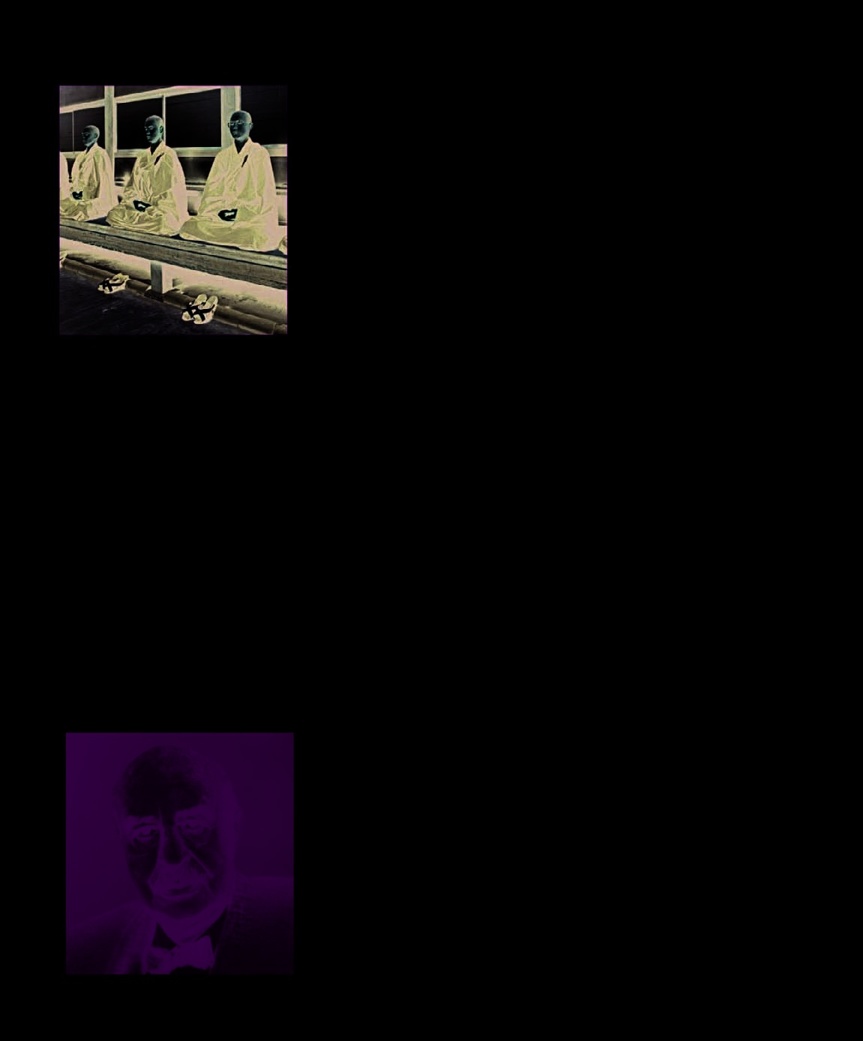The Psychology Book (36 page)
Read The Psychology Book Online
Authors: Unknown

the myriad methods that the
that these can be explored
do. Lastly, the ego—like a decision-
mind uses to prevent anxiety from
through analysis.
making adult—controls impulses
becoming overwhelming. Freud
and forms judgments on how to act;
described the many and creative
1976
American psychologist
it is the moderator, suspended
defense mechanisms we employ,
Jane Loevinger says that
between the id and the superego.
from humor and sublimation to
the ego develops in stages
Austrian psychoanalyst Anna
denial and displacement. Her theory
throughout a person’s life,
Freud expanded upon her father’s
of ego defenses was to prove a rich
as a result of an interaction
ideas, drawing attention to the
seam of thought within the humanist
between the inner self and
formation of the superego and its
therapies of the 20th century. ■
the outer environment.
See also:
Sigmund Freud 92–99 ■ Melanie Klein 108–109 ■ Eric Berne 337

CAN BE TOLERATED
TRUTH
ONLY IF YOU DISCOVER IT
YO
FRITZ PE U
RLS ( R
1893 SEL
–1970)
F


114 FRITZ PERLS
IN CONTEXT
People believe that their viewpoint
of the world is the
objective
truth
.
APPROACH
Gestalt therapy
BEFORE
1920s
Carl Jung says that
But human experience is colored by the
personal “lenses”
through which we view it.
people need to connect with
their inner selves.
1943
Max Wertheimer explains
the Gestalt idea of “productive
Because it is our perception that
thinking,” which is distinctive
shapes our experience
…
for using personal insight.
1950
In
Neurosis and Human
Growth,
Karen Horney
identifies the need to reject the
…it is possible to
change
…we must
discard the
“shoulds” imposed by others.
our inner realities
,
“given” values
of society
and ultimately our
and family, and discover our
AFTER
external realities.
own, true values.
1961
Carl Rogers says that it
is the client, not the therapist,
who knows what form and
direction therapy should take.
We become aware that we are
1973
American self-help
building our own world
, or “truth.”
author Richard Bandler, one of
the founders of Neurolinguistic
Programming (NLP), uses
many of the Gestalt therapy
Truth can only be tolerated
techniques in his new therapy.
if you discover it yourself.
I
n the 18th century, the German range of possibilities—is coded rather than acknowledging the role philosopher Immanuel Kant
by the individual “lenses” through
of perception and its influence in
revolutionized our thinking
which we view it. We do not
creating our perspective, together
about the world by pointing out that
automatically absorb all the sounds,
with all the ideas, actions, and
we can never really know what
feelings, and pictures of the world;
beliefs that stem from it. For Perls,
is “out there” beyond ourselves,
we scan and select just a few.
the only truth one can ever have is
because our knowledge is limited
Fritz Perls, one of the founders
one’s own personal truth.
to the constraints of our minds and
of Gestalt therapy, pointed out that
senses. We don’t know how things
this means our personal sense
Accepting responsibility
are “in themselves,” but only as we
of reality is created through our
Perls developed his theories in
experience them. This view forms
perception; through the ways in
the 1940s, when the dominant
the basis of Gestalt therapy, which
which we view our experiences, not
psychoanalytical view was that the
says that it is vitally important to
the events themselves. However, it
human mind could be reduced to a
remember that the complexity of
is easy to forget this, or even fail to
series of biological drives seeking
the human experience—with its
recognize it. He says we tend to
fulfilment. This approach was far
tragedies and traumas, inspirations
mistake our viewpoint of the world
too rigid, structured, simplified,
and passions, and its nearly infinite
for the absolute, objective truth,
and generalized for Perls; it did not

PSYCHOTHERAPY 115
See also:
Søren Kierkegaard 26–27 ■ Carl Jung 102–107 ■ Karen Horney 110 ■ Erich Fromm 124–29 ■
Carl Rogers 130–37 ■ Abraham Maslow 138–39 ■ Roger Shepard 192 ■ Jon Kabat-Zinn 210 ■ Max Wertheimer 335
allow for individual experience,
The Gestalt prayer
was written by Fritz Perls
which Perls held paramount. Nor
to encapsulate Gestalt therapy. It emphasizes the
did its analysts enable their patients
importance of living according to our own needs,
and not seeking fulfilment through others.
to recognize and take responsibility
for the creation of their experience.
The psychoanalytical model operates
on the understanding that patients
are at the mercy of their unconscious
conflicts until an analyst enters to
save them from their unconscious
I do my thing and
drives. Perls, on the other hand,
you do your thing.
You are you, and I
feels it is essential for people to
I am not in this
am I, and if by
understand the power of their
world to live up to
chance we find each
own roles in creation. He wants
your expectations,
other, it’s beautiful.
to make us aware that we can
And you are not in
If not, it can’t
change our realities, and in fact
this world to live up
be helped.
are responsible for doing so. No
to mine.
one else can do it for us. Once
we realize that perception is the
backbone of reality, each of us
is forced to take responsibility
for the life we create and the way
we choose to view the world.
Acknowledging power
Gestalt theory uses the tenets of
our external environment. Once
to maintain emotional stability
individual experience, perception,
we understand that our perception
regardless of the environment as
and responsibility—both for one’s
shapes our experience, we can
“homeostasis,” using a biological
thoughts and feelings—to encourage
see how the roles we play and the
term normally used to describe the
personal growth by establishing
actions we take are tools, which
maintenance of a stable physical
a sense of internal control. Perls
we can then use consciously for
environment within the body. It
insists that we can learn to control
changing reality. Control of our own
implies a fine balancing of many
our inner experience, regardless of
inner psychic environment gives us
systems, and this is how Gestalt
power through two layers of choice:
therapy views the mind. It looks for
in how to interpret the environment,
ways of balancing the mind through
and how to react to it. The adage,
the many thoughts, feelings, and
“no one can make you angry other
perceptions that make up the whole
than yourself,” perfectly exemplifies
human experience. It views a person
this philosophy, and its truth can
holistically and places the focus
Learning is
be seen played out in the different
firmly on the whole, not the parts.
the discovery that
ways that people react to traffic
Perls saw his task as helping his
something is possible.
jams, bad news, or personal
patients to cultivate an awareness
Fritz Perls
criticism, for example.
of the power of their perceptions,
In Gestalt therapy, a person is
and how they shape reality (or what
forced to take direct responsibility
we describe as “reality”). In this
for how he or she acts and reacts,
way, his patients became able
regardless of what may seem to be
to take control of shaping their
happening. Perls refers to this ability
interior landscape. In taking ❯❯

